25% of common sports injuries are in the ankle-foot area, running over 21 km per week is prone to ankle injuries.
The information was shared by Dr. Phan Vuong Huy Dong, Chairman of the Ho Chi Minh City Sports Medicine Association, at a scientific seminar on leg injuries in sports at Gia An 115 Hospital on February 25.
According to Dr. Dong, a recent survey by Luka Vitez and colleagues showed that endurance runners running over 21 km per week suffered from many foot injuries such as Achilles tendonitis, ankle pain, calf overload syndrome, foot arch pain, metatarsal head pain... The risk of injury increases for older people, those who are overweight, tall, do not have the habit of warming up, and non-professional athletes.
The foot has a complex structure, so injuries often cause difficulties for clinicians. With popular sports, 25% of injuries are in the metatarsal region. Some common injuries are Morton's neuroma, metatarsalgia, joint injuries, posterior tibial tendon injuries... Of which, 35% of Chopart joint injuries are related to sports, especially rotational sports. Many cases of these injuries are misdiagnosed or missed, if not treated properly, can cause flatfoot deformity complications.
Doctor Dong recommends that when running a lot or intending to run professionally, it is necessary to pay attention to a general health check-up, especially musculoskeletal and ankle problems before participating to know what intensity and type of exercise is suitable for the body.
Any health issues you may have should be addressed before you start playing sports. For example, people with overpronation need to be corrected with appropriate insoles. Runners need to be properly trained by a qualified trainer, ensuring that they develop at least some of the elements of strength, endurance, flexibility, and reflexes. The training program is individualized, without increasing the intensity of the exercise too quickly.
"How many kilometers to run per week depends on the assessment of the doctor, coach and the athlete himself as well as the progress of the training program," the doctor said.
To prevent foot injuries, screening and treatment of pathologies in this area is very important. During training, attention must be paid to training the strength, endurance, flexibility of the anterior, posterior, medial, lateral tendons and intrinsic muscles of the foot.
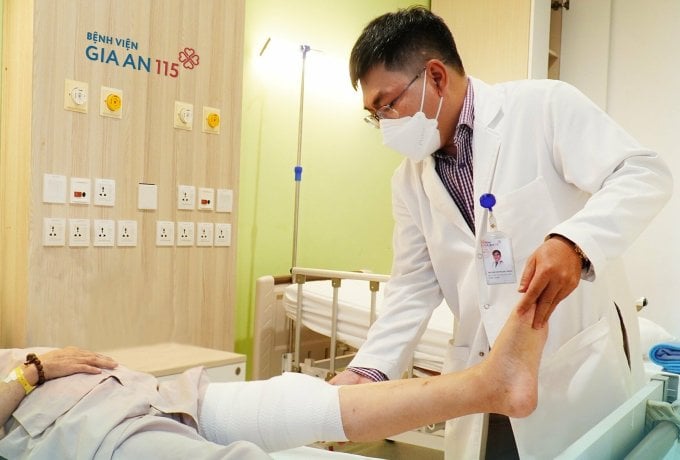
Doctor treats patient's leg injury. Photo: Provided by the hospital
Dr. Vo Phuoc Minh, Gia An 115 Hospital, said that many neck and foot injuries not only affect daily life and work, but can also have very serious consequences if not intervened early and treated effectively. Delaying treatment makes the condition worse, the patient misses the opportunity for medical treatment, has to undergo deeper interventions such as surgery and increases the time to recover and return to daily activities.
When there are injuries, you need to go to a medical facility immediately for examination and treatment. Do not be subjective or negligent, especially avoid applying oil, hot balm or herbal medicine on your own to delay going to the doctor.
Immediate first aid treatment of trauma using the RICE method within the first 48-72 hours will greatly assist in later treatment, including:
R (rest): Rest, stop moving the injured area.
I (ice): Apply cold compresses to the injured area for 5-10 minutes, repeat 5-6 times/day.
C (compression): Bandage the injured area to reduce swelling and edema.
E (elevation): Raise the injured area above heart level to reduce bleeding.
Le Phuong
Source link


![[Photo] Hanoi morning of October 1: Prolonged flooding, people wade to work](https://vphoto.vietnam.vn/thumb/1200x675/vietnam/resource/IMAGE/2025/10/1/189be28938e3493fa26b2938efa2059e)


![[Photo] President of the Cuban National Assembly visits President Ho Chi Minh's Mausoleum](https://vphoto.vietnam.vn/thumb/1200x675/vietnam/resource/IMAGE/2025/10/1/39f1142310fc4dae9e3de4fcc9ac2ed0)
![[Photo] Keep your warehouse safe in all situations](https://vphoto.vietnam.vn/thumb/1200x675/vietnam/resource/IMAGE/2025/10/1/3eb4eceafe68497989865e7faa4e4d0e)



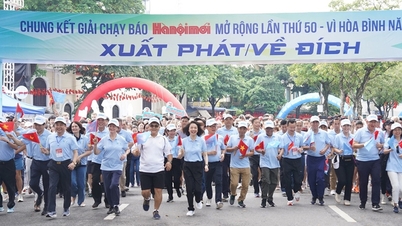






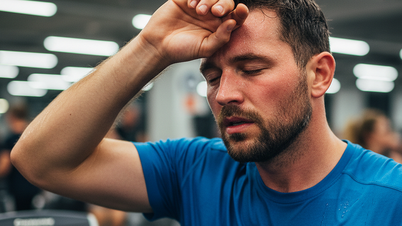




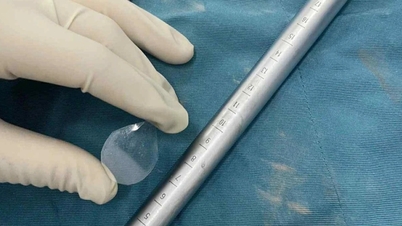


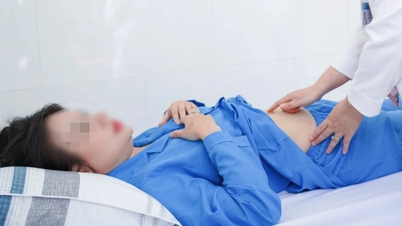







































































Comment (0)